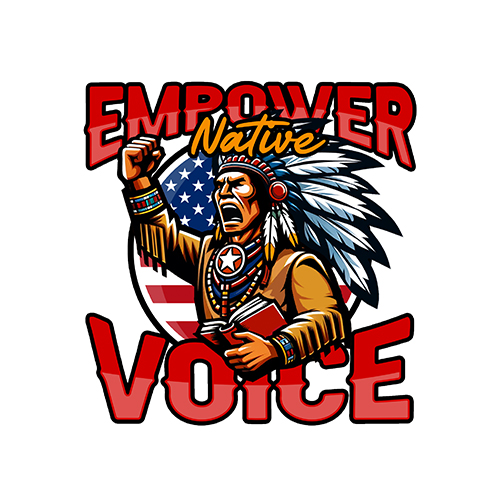
I Took A DNA Test Unisex T-Shirt - Buy Here
A reorientation of U.S. history is required for many reasons. It cannot be accomplished simply by adding new cast-members to existing dramas. Our history must reckon with the fact that Indigenous peoples, African Americans, and millions of other non-white citizens have not enjoyed the self-evident truths of equality, life, liberty, and the pursuit of happiness proclaimed at the Founding as being inalienable rights belonging to all. Native peoples were not granted U.S. citizenship until 1924, by which time the federal government had seized hundreds of millions of acres of land from Native nations in over 300 treaties. Tens of thousands of Native peoples were killed by settler militias and U.S. armed forces during the Civil War era while government-sponsored campaigns of child removal thereafter resulted in forty percent of Indian children forcibly separated from their families and taken to boarding schools by 1928.
Pervasive violence and dispossession are more than sidebars or parentheses in the story of American history. They call into question its central thesis. The exclusion of Native Americans was codified in the Constitution, maintained throughout the Antebellum era, and legislated into the twentieth century. Far from being incidental, such exclusion and dispossession enabled the development of the United States. U.S. history as we currently know it does not account for the centrality of Native Americans.
Scholars have recently come to view African-American slavery as central to the making of America, but few have seen Native Americans in a similar light. Binary, rather than multiracial, visions dominate studies of the past where slavery represents America’s original sin or the antithesis of the American idea. But can we imagine an American Eden that is not cultivated by its original caretakers? Exiled from the American origin story, Indigenous peoples await the telling of a continental history that includes them. It was their garden homelands, after all, that birthed America.
Building a new theory of American history will take years. It will require the labor of generations of contributors, and it will need new themes, new geographies, new chronologies, and new ideas that better explain the course of American history. It is a challenge open to all, one that falls particularly hard on tribal members who continue to bear the burdens of explaining Indigenous experiences, history, and policies to non-Native peoples.
To understand the formation of the earliest American colonies requires seeing Indigenous societies in motion, not stasis. Like the oceans upon which newcomers traveled, North America’s earliest colonies experienced waves of turbulence within pre-existing Indigenous geographies. From the foods they ate to the economies that sustained them, colonists depended on Indigenous peoples. To conceive of their composition, survival, and growth otherwise is fallacy. Indigenous-imperial relations explain the distinctions among Europe’s American colonies, several of which, including colonial New Mexico, were a part of European empires longer than they have been a part of the United States.
European contact sent shockwaves across Indigenous homelands, reverberating in many forms, some of them undocumented. Scholars have spent over fifty years attempting to measure the impacts of these intrusions. They suggest that the worlds of Native peoples became irrevocably disrupted by the most traumatic development in American history: the loss of Indigenous life due to European diseases. Epidemics tore apart numerous communities and set in motion unprecedented migrations and transformations. North America’s total population nearly halved from 1492 to 1776: from approximately 8 million to under 4 million.
The almost unimaginable scale of death and depopulation calls into question celebratory portraits of the Founding, and also helps to explain the motivations for American Indian trade, diplomacy, and warfare, all of which shaped the evolution of European settlements. From the rise of New France in 1609 to the colonization of California in 1769, the economic, diplomatic, and military influence of American Indians were key factors in imperial decision-making. The treaties with Indigenous nations ratified by the U.S. Senate constitute the largest number of diplomatic commitments made by the federal government throughout its first century. These truths show that it is impossible to understand the United States without understanding its Indigenous history.
Native Americans have emerged in the last few decades from the shadows of historical neglect in their full complexity, living in varied societies, speaking centuries-old Indigenous languages, and governing often vast territories. Many continue to live in the homes of their ancestors and tend gardens that pre-date European arrival, such as the 21 Pueblo Indian nations of Arizona and New Mexico who maintain North America’s oldest continuously inhabited communities.
The rediscovery of American history that is under way continues to swell. Each year, new courses, publications, and partnerships between tribal communities and non-tribal institutions continue to shape the practices of researchers, teachers, tribal members, and students of all ages who yearn for more accurate, multi-racial histories. Tribal governments have grown in their size and capacities, providing the clearest examples in American politics of the retained, inherent sovereignty of Native nations. Some, like the Navajo Nation, govern hundreds of thousands of tribal citizens across millions of acres. Others employ thousands of Native and non-Native workers in their industries and economies. These nations reside within the borders of the United States where they maintain autonomy, sovereignty, and power and do so in concert with the federal government.
If the schools or university classrooms are to remain vital civic institutions, we must create richer and more truthful accounts of the American Republic’s origins, expansion, and current form. Studying and teaching America’s Indigenous truths reveals anew the varied meanings of America.
My aim is to reorient U.S. history by redressing the absence of American Indians within it. During the past 500 years, American history developed out of the epic encounter between Indians and European empires and out of the struggles for sovereignty between Native peoples and the U.S. American Indians were central to every century of U.S. historical development. Rather than seeing U.S. history and Native American history as separated or disaggregated, this project envisions them as inter-related. It underscores the mutually constitutive nature of each. The two remain interwoven.
Notwithstanding its growth, Native American history remains encumbered by challenges. The habits of previous generations remain calcified. College campuses, textbooks, and public memorials continue to exclude Native peoples. As Pawnee Scholar Walter Echo-Hawk maintains, “the widespread lack of reliable information about Native issues is the most pressing problem confronting Native Americans in the United States today.”

Blue Beaded Long Necklace Handmade Native American Style - Buy Here







